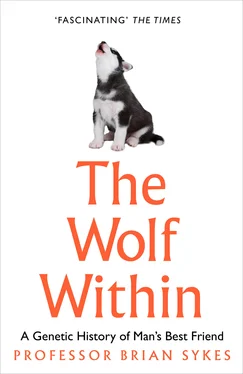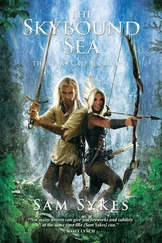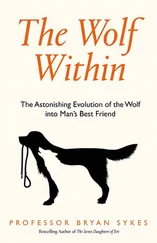When both wolves and humans had gorged themselves on the beast’s entrails they sat there looking at each other. Something passed between them. Was it a spirit message? Was it merely mutual admiration between hunters? Did either of them know what had just happened?
Over the years that followed, wolf and human grew closer together. The next spring, as lines of reindeer moved towards the skyline through purple meadows of crocus and gentian on their way to summer pastures, wolf and human followed to pick off the stragglers. Increasingly easy in each other’s company, they no longer kept their distance and it was not long before they began to cooperate in the hunt. Sensing a weakness among the reindeer, Lupa picked out the target animal in the herd. The pack trotted off in pursuit, with the humans following as best they could. As the isolated deer began to tire, the wolves formed a circle and held it at bay until the humans arrived to kill it with their spears. Because the wolves no longer needed to completely exhaust the animal in order to avoid injury, the chase was over more quickly. For their part, the humans had a static target for their spears. All shared the kill.
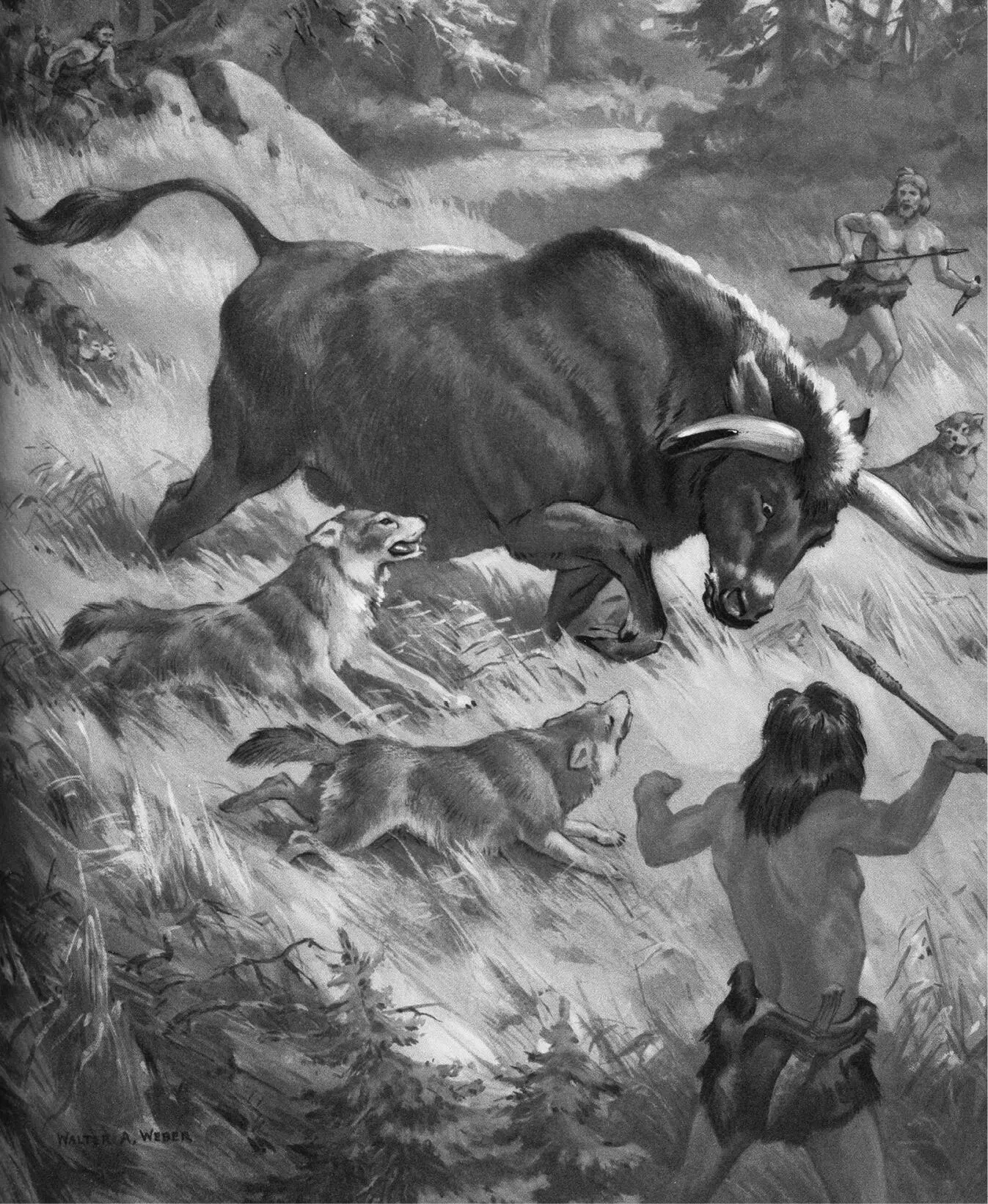
An Artist’s recreation of what a collaborative hunt, like Lupa’s, might have looked like. The wolves harry the aurochs, tiring it out, while the humans inflict the killing wounds from a safe distance. (© GraphicaArtis)
Wolf and human benefited from this collaborative hunting, and in the years that followed, long after Lupa had died, both groups learned to adapt and improve it. Wolves began to signal the presence of prey with a low-pitched howl. Humans understood the message and a hunting party set out to join them. Wolves and humans who hunted together prospered at the expense of those who did not. Their numbers increased and gradually the unstoppable current of natural selection spread this symbiosis across the rest of Europe. Eventually some wolves began to live with humans, intermittently at first, then permanently. Their numbers increased even more and, from this beginning, dogs began to evolve.
All this happened a very long time ago in the high and wild country above the Gate of Trajan. That was the start. We have yet to reach the end.
*Named after Roman Emperor Trajan (ruled 98–117 CE) and marking the northern boundary of the Empire.
2
It’s easy to pinpoint the moment when the collective view of how humans and all other animals and plants came to be changed abruptly. On 24 November 1859 the naturalist Charles Darwin published On the Origin of Species by Means of Natural Selection . The main contention of the book, that species were not fixed and could change over time, immediately challenged the predominant view of the Church that all of nature was deliberately and carefully designed by God himself. Humans were created by God in His image and, as such, occupied a special place above all other animals. The fact that all naturalists at the two predominant British universities, Oxford and Cambridge, were enrolled as Church of England clergymen as a condition of their employment only strengthened the grip that this ‘natural theology’ had on scientific opinion. To disagree was dangerously close to heresy.
At the heart of Darwin’s theory of natural selection was the concept that individuals within a species differed in their ability to survive and reproduce. Those that succeeded in what he referred to as ‘the struggle for survival’ passed on these qualities to their offspring, who were then better able to endure the struggle. Consequently, over time, new species evolved and others became extinct.
In many ways, Darwin was unlike any modern biologist. He knew nothing of genetics, the underlying principles of which lay undiscovered until well after his death in 1882. Nor did he work in a laboratory. Instead he relied on extensive correspondence with hundreds of his contemporaries throughout the world, persuading them to pass on information and sometimes to examine or collect specimens on his behalf. By these means, his accumulated wisdom and knowledge were immensely broad, which is what makes his writings such a joy to read. His theory of evolution took decades of development and refinement. Most of these were spent collecting a wide range of examples of his theory in action until he finally felt ready to publish.
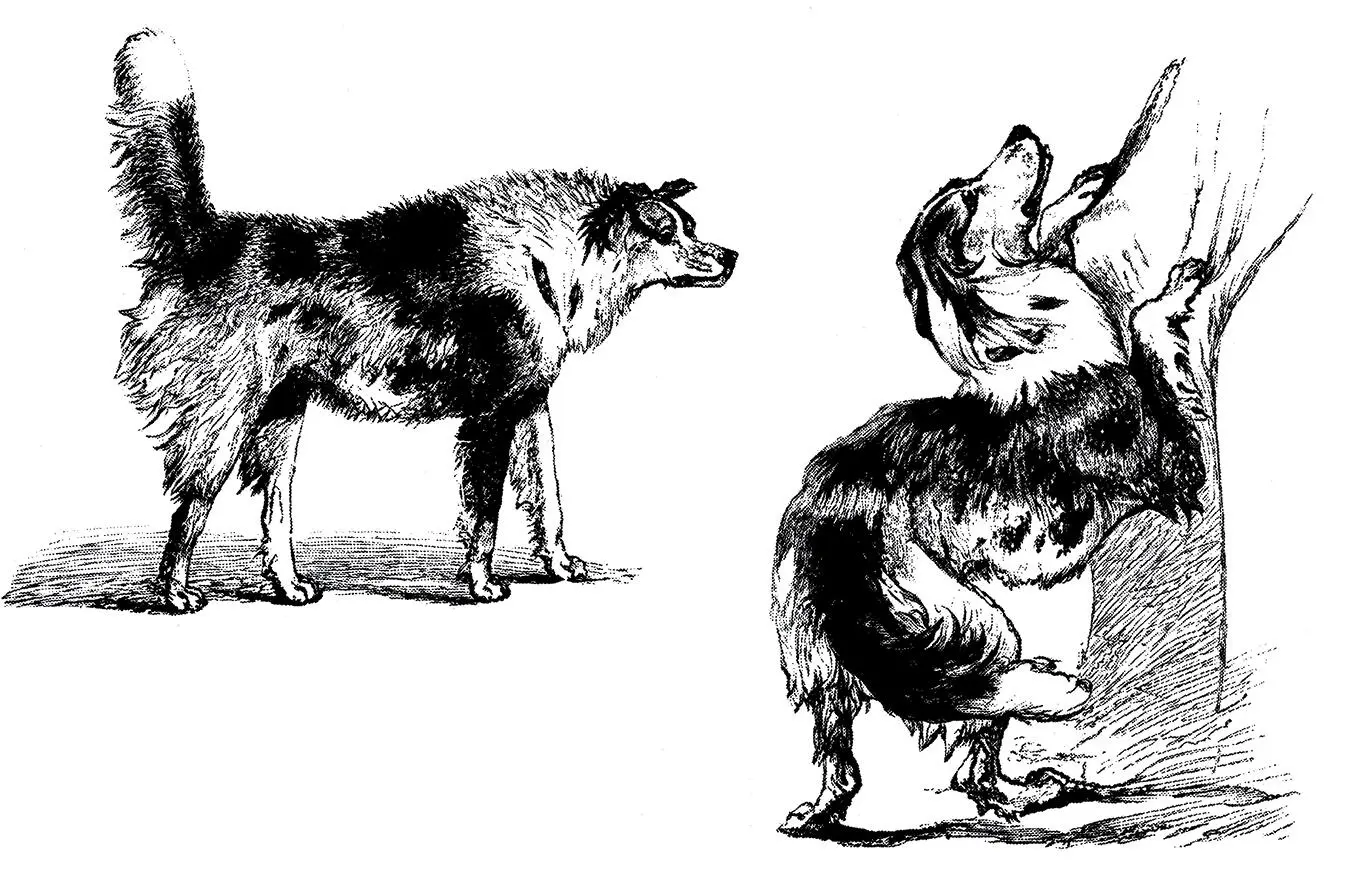
The Expression of the Emotions in Man and Animals by Charles Darwin was published in 1872. Darwin’s book is among the most enduring contributions to nineteenth-century psychology and a testament to his fascination with the dog. The left illustration is captioned, ‘Half-bred Shepherd dog approaching another dog with hostile intentions’. The right, ‘The same caressing his master’. Both were drawn by A. May. (Science History Images/Alamy Stock Photo)
One important strand was Darwin’s observations of the creation of new forms by deliberate breeding, which he referred to as artificial selection. His favourite examples were the extravagant strains of domestic pigeon created by fanciers, the main reason being that he was pretty certain that they all descended from just one wild species, the rock dove Columba livia . As in all his work, Darwin was thorough and meticulous. He kept the main varieties of pigeon himself at home, and through his network of contacts collected as many skins as he was able from far and wide. He spent days in the collections at the British Museum and even enrolled in two London pigeon-fanciers’ clubs.
As well as pigeons, Darwin studied pigs, cattle, sheep, goats, horses and asses, domestic rabbits, chickens, turkeys and ducks, even goldfish, not to mention plants of many kinds. And, importantly for us, dogs. The first chapter of his accumulated thoughts on evolution through artificial selection, published in 1868 as The Variation of Animals and Plants under Domestication , is devoted entirely to dogs.
Right at the start Darwin sets out the principal question surrounding the origin of dogs.
The first and chief point of interest in this chapter is whether the numerous domesticated varieties of the dog have descended from a single wild species or from several. Some authors believe that all have descended from the wolf, or from the jackal or from an unknown and extinct species. Others again believe, and this of late has been the favourite tenet, that they have descended from several species extinct and recent, more or less commingled together.
Then he adds: ‘We shall probably never be able to ascertain their origin with certainty.’
Darwin’s questions on the origin of dogs remained unanswered for over 120 years until the new science of molecular genetics began to take an interest. In the chapters that follow we will explore what this new science has to say about the evolution of dogs and how, for once, Darwin has been proved wrong. We have been able to ascertain the origin of dogs with certainty.
3
I Met a Traveller from an Antique Land
This is not the first time that I have hijacked this line from Shelley’s ‘Ozymandias’. It conveys perfectly the sense of antiquity and timeless continuity I still feel when I gaze at my favourite guide to the past – mitochondrial DNA.
To explain, we need to go back thirty years to a key paper published in the leading scientific journal Nature by the New Zealand-born evolutionary biologist Allan Wilson from the University of California, Berkeley.1 Wilson and his team had taken placenta or cell lines from 147 women from all over the world and isolated DNA from the mitochondria. Mitochondria are components of our cells that reside in the cytoplasm, that part of the cell that surrounds the cell nucleus but is still contained within the cell membrane. They are integral components of the cell, but they have their own separate origin. Back in the distant past they were free-living algae that became engulfed by a primitive cell and have remained there ever since. Being originally separate organisms, mitochondria still retain their own DNA. Their special property is that they enable the cell to use oxygen to burn food. Until then, cells only had the apparatus for anaerobic metabolism and could not cope with atmospheric oxygen. With the help of their newly acquired mitochondria, however, cells could squeeze up to nine times as much energy from the same amount of food. In the early atmosphere, oxygen was toxic but mitochondria turned it into the life-giving gas upon which every animal species depends upon today.
Читать дальше
